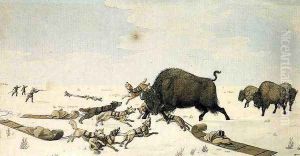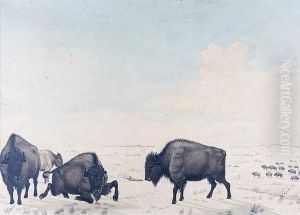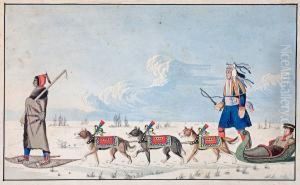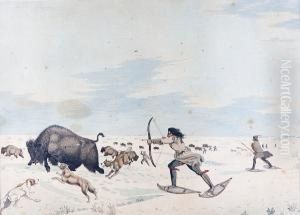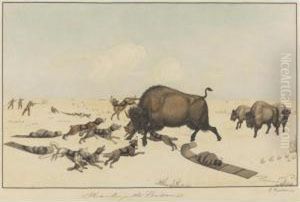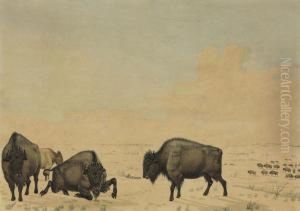Peter Rindisbacher Paintings
Peter Rindisbacher was a Swiss-born artist known for his detailed watercolor paintings that depicted the life and landscape of the North American frontier. Born on April 12, 1806, in Zofingen, Switzerland, Rindisbacher demonstrated artistic talent at a very young age. He emigrated with his family to the United States in 1821 as part of a group of Swiss settlers. They initially settled at the Red River Colony in present-day Manitoba, Canada, which was then a part of Rupert's Land and administered by the Hudson's Bay Company.
In this new and challenging environment, Rindisbacher began to create artworks that captured the experiences of the colony's settlers, the indigenous peoples, and the abundant wildlife. These works were among the earliest visual records by a European artist of life in the interior of North America. Rindisbacher's detailed and often vivid illustrations provided valuable insights into the interactions between European settlers and Native American tribes, such as the Cree and the Anishinaabe.
Despite his relative isolation on the frontier, Rindisbacher's talents did not go unnoticed. His work began to gain attention, and he received commissions from the Hudson's Bay Company and other entities interested in the documentation of the North American territories. Unfortunately, Rindisbacher's career was cut short when he died at the young age of 28 on August 13, 1834, in St. Louis, Missouri, where he had moved in the hopes of finding a broader market for his art.
Throughout his short life, Peter Rindisbacher made significant contributions to the field of ethnographic and natural history illustration. His body of work provides historians and art lovers with a rich visual archive of a formative period in the history of Canada and the United States. Rindisbacher's legacy lives on through his watercolors, which continue to be studied and appreciated for their historical value and artistic merit.
